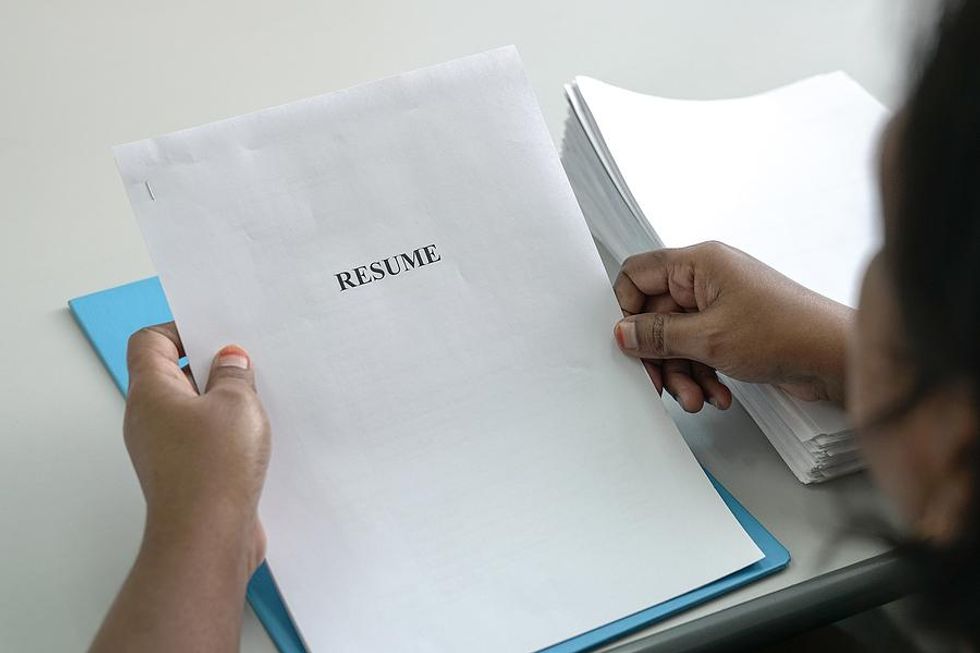Want To Land A Job In 2023? Your Resume MUST Include This!

The primary goal of your resume is to help you stand out to employers so they give you a call and invite you in for an interview. It’s the first impression a hiring manager has of you, and the first step to landing a job. So, how do you optimize your resume so it beats out the competition?
Many job seekers feel lost when writing their resumes. What should you include on it? How much information is enough? What do hiring managers really want to see?
If any of these questions have crossed your mind, don’t worry. Here’s the one thing you need to include on your resume if you want to stand out to employers and land a job.
The Secret To Landing A Job In 2023? Quantifiable Accomplishments On Your Resume!

The most important thing to include on your resume is quantifiable accomplishments. Quantify your work experience and put those numbers and figures under the “Work History” section on your resume.
Not sure how to quantify your work history?
Follow these 3 tips to effectively quantify your work history on your resume:
1. Add numbers to your bullet points
You should have at least one number for each bullet point you include on your resume. If you want to show your depth of experience in certain areas, you need to show those numbers. By doing this, an employer can see how much experience you have and how often you use a certain skill. So it’s really important to add as many numbers as you can to these bullet points.
Go through an average day at work, list all of your responsibilities and tasks, and ask yourself, “Okay, so if this is what I was doing every day, how often was I doing it? How much did I do? How many people did I work with?” By asking yourself these types of questions, you’ll be able to pull out those numbers and add that depth of experience to your bullet points.
2. Include 3-7 bullet points per role
For each role you list on your resume, you should write three to seven of these quantified bullet points to showcase the skill sets that you have that are related to the position you’re applying for. Any more than that and you’ll likely overwhelm the reader. The hiring manager may think you’re overqualified, that your experience is all over the place, or that you wouldn’t be happy in the job.
So, be careful how much you put on your resume because too little text sends a message, but so does too much text. You need just the right amount of information, and three to seven bullet points is the sweet spot.
3. Choose accomplishments that support your relevant hard skills
You need to be intentional with what you’re choosing to put on your resume to make sure you’re supporting your specialty, that service you provide to employers as a business-of-one. The key is to only choose the accomplishments that relate to the skill sets you’re showcasing in the top fold of your resume, the skill sets that directly support your specialty.
Make sure you’re intentionally pulling these things and including them on your resume as opposed to listing every accomplishment you’ve ever had in your career. This is going to be very important in terms of showcasing that depth of experience because you don’t want hiring managers to get distracted. You don’t want them focusing on an accomplishment that doesn’t support a relevant skill set. Make it clear what your specialty is and how you’ve provided value to employers with those skill sets in the past.
Why Quantifying Your Work History Is Essential

Quantifying your work history is usually the hardest part of writing a resume for job seekers. It’s simply not something we learn in school. Recruiters and hiring managers don’t want to know how you did your job or what your tasks were. All they care about are the results.
What did you make happen as a result of your work? How did you add value? When you quantify your work history, a recruiter can look at the hiring manager and say, “This person has done this, this, and this. And here are the numbers to prove it.” That’s why your resume needs to be quantified. It’s proof that you’re a qualified job candidate and a valuable potential employee.
What Does “Quantifying Your Work History” Look Like?

There is always a way to quantify your work experience. You may think that you have nothing to quantify on your resume, but you do.
If this is your first time trying to quantify your work history and you can’t think of anything that counts as a quantifiable accomplishment, write out what you did at a specific job, circle every noun, and ask yourself: “Can I quantify that?”
For example, a receptionist may not think they have any quantifiable accomplishments or any type of work history that can be quantified. But when they asked themselves the right questions, they realized they accomplished a lot more than they thought, and they could assign numbers to these accomplishments. They asked…
- “How many people work at my company?”
- “How many calls did I take a day?”
- “How many phone lines were on the system?”
The result? A few bullet points listing their quantifiable work experience:
- Receptionist for a 500-person firm
- Handled over 100 phone calls a day
- Managed a 12-line phone system
You can absolutely quantify your work experience. You will find a way. Circle every noun and quantify them. Look for percentages. If you can’t come up with exact numbers, you can use your best guess, erring on the conservative side. What was the percentage of growth? What was the percentage of savings? What were the revenues? There are always numbers. You just have to look for them.
In order to land a job in 2023, your resume must have quantifiable accomplishments. It may be difficult at first, but once you get the hang of quantifying your work history, you’ll never go back. Quantify your work history on your resume and start seeing results in your job search today!
Need more help with your job search?
We’d love it if you signed up for Work It Daily’s Event Subscription! Get your career questions answered in our next live event!

























































